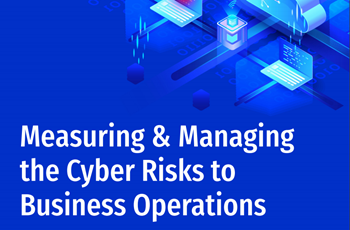No matter how good your physical security is, risks and incidents will inevitably arise. It’s a function of how well your team responds to them that will prevent further escalation. Training to effectively manage incidents will ensure prompt resolutions, whether they occur at or beyond your key access points.
Incident management, alongside disaster recovery and other security strategies are a key part of preparing for an incident and resolving them more effectively. If you don’t have one in place, see “How to create a successful physical security roadmap” to get started.
Expanding on those roadmap themes, these five stages of effective incident management are key to maximizing the efficiency of your physical security.
1. Unify core security systems and sensors
Transitioning to dashboards and smart displays is the ultimate objective for the majority of departments, as it consolidates all crucial operational and strategic data into a unified platform. This holds true for the security function, where the complexity and diversity of security systems, tools, and data sources can pose visibility challenges for the end user.
Consolidating this data into a single interface improves situational awareness, making communication among security personnel seamless, and ensuring quick access to critical data in the event of an incident. This also allows security teams to better coordinate the deployment of patrols, utilize sensor data more effectively, and optimize the deployment of other security assets. In this way, the security team’s threat detection, monitoring, and response capabilities are improved.
With a unified platform, managers can also continuously evaluate and improve their security strategies more easily, while identifying any potential gaps. These could range from incomplete coverage from surveillance cameras to inconsistent access control logs. Automation processes such as real-time alerts, predictive analytics, and automated responses can also be more effectively deployed in a unified platform.
2. Configure the user interface for improved visualization
User experience is the dominant issue around applications for a broad base of security operators. When evaluating solutions, buyers and test operators need to ensure there’s no ambiguity in design, and no mystery buttons or quirky settings for users to contend with. It’s important to align technical capabilities with an intuitive interface to enhance usability and effectiveness. Any and all alerts must be obvious to improve incident detection and use clear language or icons to speed the response.
Beyond the user experience, dashboards and reports need to deliver actionable information. Clear and consolidated reporting that shows incidents in progress ordered by priority, the current deployment of resources, and the schedule of any upcoming security system downtime or important events can help managers and leadership make informed decisions and ensure smooth operations.
Similarly, security dashboard reports can help to ensure that no expenses or trouble areas are hidden within the system, waiting to be discovered during a compliance inspection, which can happen too late.
3. Boost security performance by streamlining investigations
Creating a tiered response is the next step in improving your incident response and helping workers to avoid struggling under a high alert volume. Following the Security Orchestration, Automation and Response (SOAR) principles help to accelerate response times and reduce operational costs, while making security a strategic asset to the business.
The features of SOAR include smart use of data collection and analytics to understand recurring themes among investigations, and case management to assign the right workers to specific types of incidents, with clear remediation processes drilled into all operators. Using SOAR, most enterprises report they can:
- Detect incidents and attackers faster
- Contain live incidents more rapidly
- Gain executive support for security budget increases
- Use in-house detection and remediation mechanisms
Finally, follow up on every incident to find out what could have been done better, what resources would make resolving incidents easier, and where working with on-site teams, how external partners or other agencies can support your own security team.
4. Optimize incident and alarm management
Automation is helping with the heavy lifting when it comes to streamlining and triaging the alarm pipeline and supporting operators with other repetitive tasks. But it’s important to continuously improve your threat and decision management, refining the processes, and placing your people assets in the best place to respond to changing threats.
Whether improving the layout of your security operations center (SOC) or enhancing your existing software to meet user needs, every refinement either contributes to the overall performance of the security function or highlights further changes that can be made. The crucial step is linking the physical with the digital. For example, the patterns and frequency of security patrols can be adjusted to align with the levels of traffic and footfall seen by operators on their dashboards.
5. How deeper analysis can instill and maintain a continuous improvement culture
From sports to business, the post-match analysis may be one of the less loved aspects, but they’re essential to discovering ways to improve processes. At a basic level, comparing response and resolution times provides broad metrics to ensure service delivery and quality remain high.
But don’t just rely on the data. By talking to your team, you can also uncover their personal insights into and issues or inefficiencies with your existing processes, as well as other types of feedback that can improve your security operations. As part of that process, remember to analyse mental health and wellbeing to ensure the toll of security responsibility is not damaging your team.
Audits also ensure that the privacy and compliance elements of security are being maintained and that operators are following the correct procedures when an event occurs. With a blended approach to incident follow-ups, everyone remains on their toes, and the hardware and systems in place are put to the test.
In the automated age, security never sleeps, and neither can those responsible for improving the function. While many enterprises rely on smart hardware and AI software to improve their processes, instilling strong fundamentals, constant analysis, and effective incident response will ensure that each part of the security package effectively meets the needs of the business.
Access the latest business knowledge in IT
Get Access



Comments
Join the conversation...